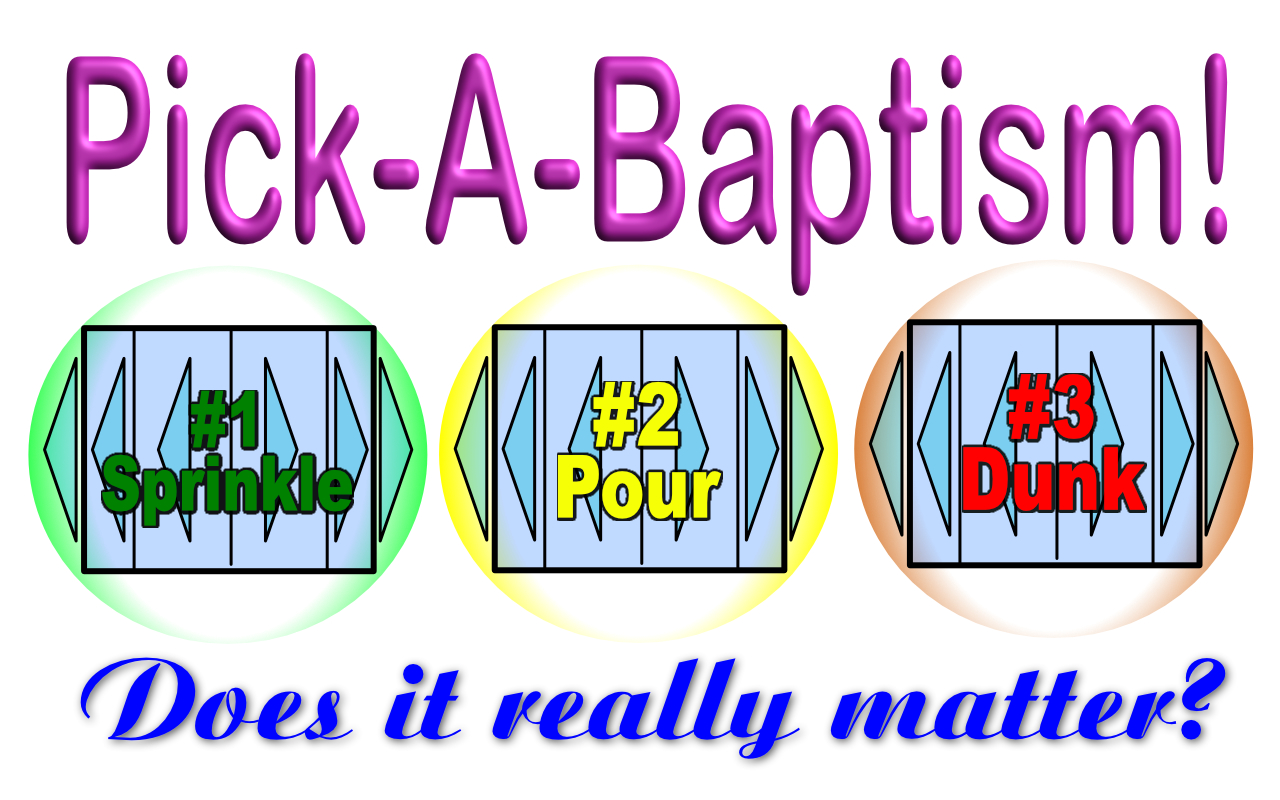
Well, welcome to this very short podcast about the methods or modes of baptism. When we survey the methods of baptism used in the Christian world we count three. Some churches symbolically sprinkle water on the head as a form of baptism, some pour the water and others baptize by fully immersing a person in water. As you can imagine, this is another one of those areas of debate which has raged for centuries. Is there a right way to baptize and a wrong way? Does it even matter?
Let’s dive into it.
Definitions
In this podcast we’ll quickly review definitions used in the baptism debate and then we will peruse the details about baptisms in the next few podcasts as we close out our lengthly series on baptism.
The Bible, specifically, the New Testament uses the word baptize in its various forms over 60 times. Each time it is used in connection with conversion, it is derived from the Greek word “bapto” which means to dip, dye, plunge, overwhelm, cover completely, submerge, etc. The Greek word “Bapto” does not mean sprinkle or pour. This Greek word bapto is not native to the Bible… there is nothing spiritual about it at all. It was a common word used in ancient Greece and we have a very similar word in today’s Greek. Dozens of authors from Biblical time periods including Polybius, Plutarch, Galba and others used it outside of the Bible and it always meant to submerge.
If you want to dunk yourself in the definition of the word bapto, there is a deep, rich study of this topic at BibleHub.com and here is the link to the article. https://biblehub.com/greek/907.htm
The bottom line… if you want to baptize, you must fully immerse your subject in water. There is no other understanding of this word and the Bible never uses any word except “bapto,” and it’s derivatives, to describe how we should respond to the Great Commission. You must be immersed.
Now, let’s dive into the details.
Because the Christian world uses three methods they call baptism, let’s look at the other two.
Baptism by Sprinkling
Sprinkling is probably the most common. Many churches sprinkle babies with water during a baptism service when the priest or minister wets his hand with the water from a small bowl and lays it on the infants head. The Greek word for sprinkle is “rahntizó” which is further derived from rhainó, the Greek word for sprinkle. This too is a very common word in the Greek language. There is nothing biblically special about it, it’s just a regular word everyone used. But, this word is never used to describe Christian baptism in the New Testament.
Baptism by Pouring
So how about “pouring?” Hollywood has done a pretty good job of showing us baptisms in all of the various and glorious retellings of biblical stories. In these films, it is common to see Jesus or some other person walking down into a stream and John the Baptist scooping up a bit of water and gently pouring it over someone’s head. Is this baptism? No, this is “pouring.” The Greek word for pour is “epicheo,” which is derived from “cheo” which means to pour. Once again, this word is never used in the Bible as it relates to a person obeying the Gospel message. The proper response is always “bato.”
But come on now… does it really matter one whit how I am baptized? Is it really all that important? Doesn’t God see my heart and know my real intention? Do I really need to be immersed in water to be properly baptized? Why does it even matter?
Well, just think about it. What are we doing when we are baptized? We are responding to a command of Christ given in the Great Commission where a very specific word was used, “bapto.” This is how we obey the Gospel. If Jesus said, “Have water poured on your head.” Would you do that? Sure you would. If Jesus said, “Have some water sprinkled on you.” Would you be willing to do that? Sure, no problem. If Jesus said, “Click your heals together three times.” Would you do that? Of course you would… IF… you have a heart willing to obey the savior. The point is, it would not matter how silly something might seem to anyone else; if the Lord asks a good hearted person to do something, they will always humbly obey. There would be absolutely no resistance… none! So now, Jesus tells you to be “bapto,” buried in water. Why would you not do that?
Sinister Forces at Work
Why do people balk at the idea of being completely immersed in water? If you think it’s just because it is too much effort or too difficult to find a place to do it, think again. There is a far more powerful force at work here that we tend to forget about.
Who wants to prevent you and keep you from obeying the Gospel? Who wants to confuse you regarding the proper response to Christ’s clear command? Who wants to make small, subtle, seemingly “harmless” changes to the commands? Who tells us it’s too hard, too much effort, too embarrassing, to silly and so unnecessary? Who is the author of such confusion.
Think about it! Why would there even be any issue about baptism at all if it were not something very, very important; so important that Satan would do absolutely everything he could in order to keep you from obeying this very simple, very straight forward, very humbling command?
Once again, we don’t need a Greek scholar to figure all of this out. Using the heart of a child, just look at the Biblical examples of baptism. It is easy to see and understand.
Coming soon to a baptistry near you!
In our next few lessons, we will do just that; we will review the various baptismal events in the New Testament. I think we will easily discover all of the who, what, when, where, how and whys of baptism. And, I think God makes it clear and easy to understand so that we may have, A Faith that Obeys.
Enjoy!Dana Haynes
